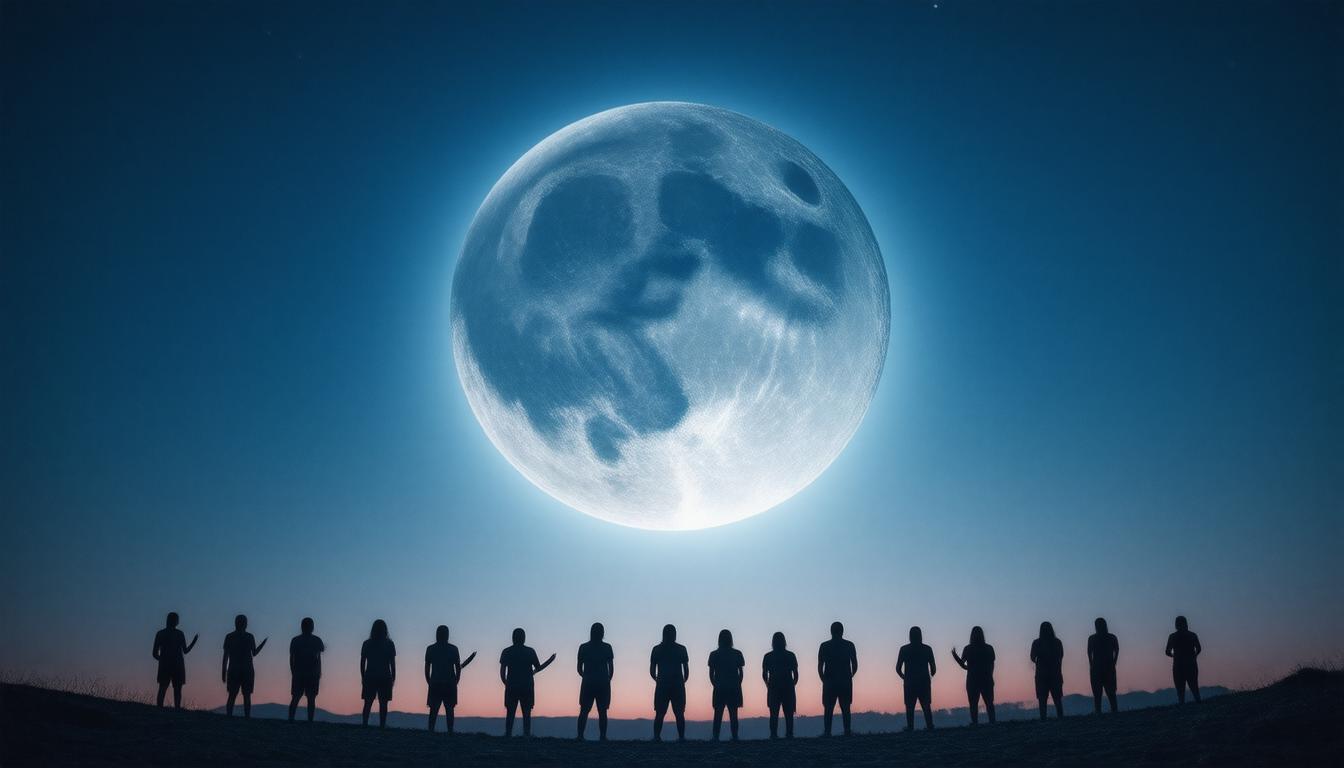🌟 Daily Awakening Quiz 🌟
The sky offers an enchanting tapestry of celestial events that consistently captivate our imaginations, and few occurrences are as mesmerizing as a blue moon solar eclipse. This unique phenomenon combines three significant features: a blue moon, a supermoon, and a total lunar eclipse, delivering an awe-inspiring spectacle for skywatchers.
What is a Blue Moon?
Traditionally, a blue moon refers to the second full moon within a single calendar month. Alternatively, it can represent the third full moon in a season that has four full moons. During this rare event, enthusiasts might anticipate a dramatic visual display, although the moon does not literally appear blue. Its significance in folklore and astrology often corresponds with themes of rarity and emotional intensity, making it a curious object of observation and intrigue.
Understanding the Supermoon
A supermoon occurs when the moon is at its closest point to Earth in its orbit, a position known as perigee. During this time, the moon appears about 14% brighter and larger in the night sky compared to a regular full moon. The combination of a supermoon with a blue moon results in a vibrant display of the lunar landscape, providing spectators with an extraordinary view.
The Solar Eclipse Effect
While solar eclipses occur when the moon passes between the Earth and the sun, a lunar eclipse, conversely, takes place when the Earth casts its shadow on the moon. A total lunar eclipse can create a striking dramatic effect, particularly when the moon takes on a reddish hue—known as a "blood moon"—as it transitions into the shadow of the Earth. This phenomenon can be observed in various regions across the globe, making timing and location key factors in optimal viewing experiences.
The Upcoming Event
On January 31, 2023, a rare celestial trifecta will unfold: a super blue blood moon. Viewers in locations such as the western United States, Alaska, and Hawaii will have the best chance to witness this stunning spectacle before dawn. In parts of North America, the eclipse will be visible early in the morning hours, providing a thrilling cosmic light show just as the sun begins to rise in the east.
Gordon Johnston, a program executive at NASA, indicates that for watchers in the continental U.S., the eclipse will be particularly exquisite in the western regions, emphasizing the importance of finding a spot with a clear view of the western horizon before sunrise.
Viewing Tips
To maximize your experience during the blue moon solar eclipse, consider the following:
-
Check the Time: Lunar eclipses operate on specific time frames. Make sure to note when the eclipse will be occurring in your time zone.
-
Find a Suitable Location: Aim for a high vantage point where the horizon is unobstructed, securing a clear line of sight to the moon as it begins its transition into the Earth’s shadow.
-
Weather Considerations: Cloud cover can obstruct your view, so staying updated on local weather forecasts can help ensure a successful viewing experience.
-
Capture the Moment: Bring a camera or binoculars to enhance your view and record the stunning changes as the moon undergoes its transformation.
Conclusion
The blue moon solar eclipse is not just a rare celestial event; it is a reminder of the beauty and wonder of our universe. As we prepare to witness this extraordinary occurrence, remember to take a moment to reflect and appreciate the intricate dance of our cosmic neighbors. Whether it evokes emotions of awe or inspires creativity, the blue moon serves as a perfect opportunity to connect with nature and the night sky. So, gather your friends or family, find your perfect spot, and enjoy this breathtaking experience.

